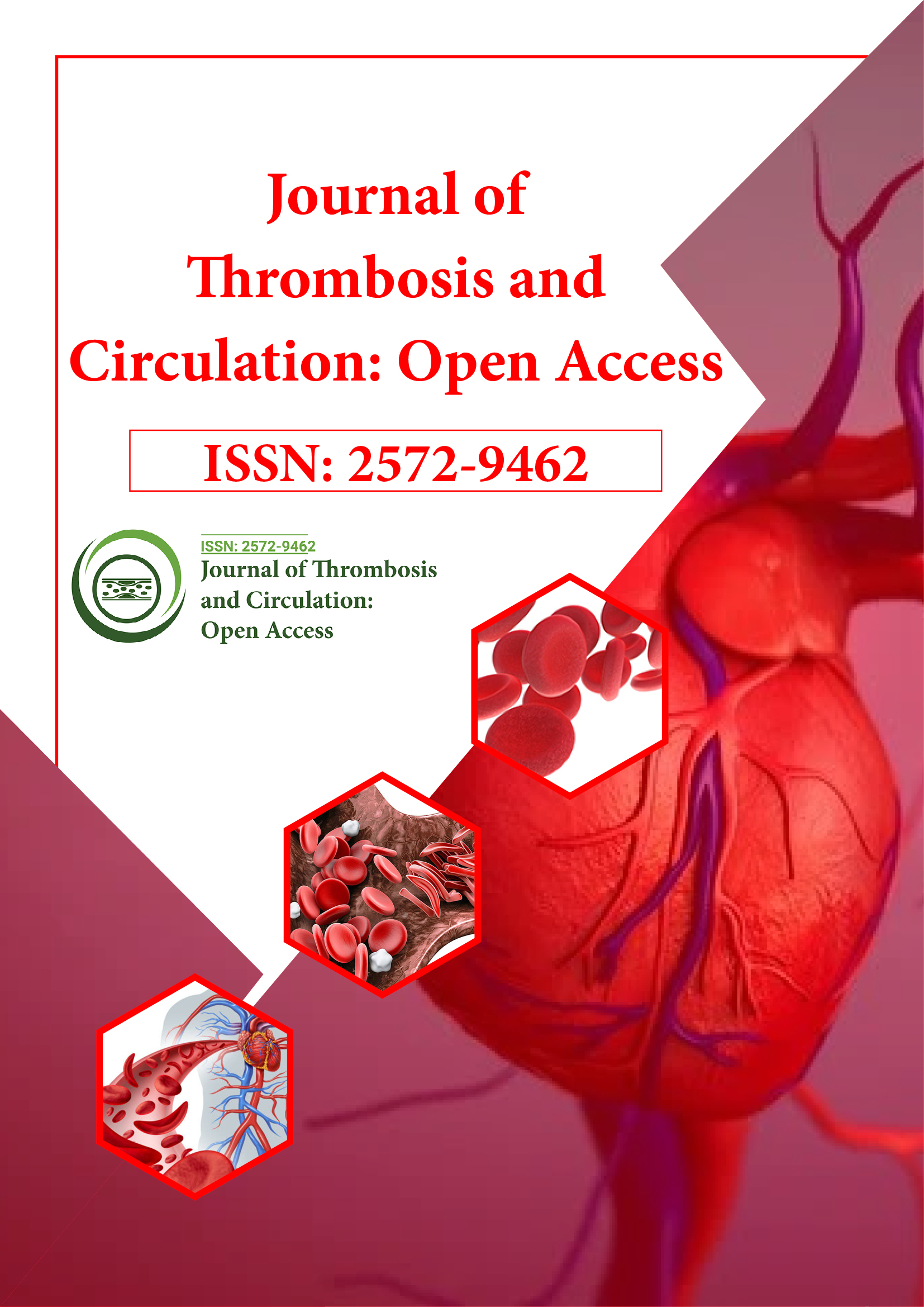Indexed In
- RefSeek
- Hamdard University
- EBSCO A-Z
- Publons
- Google Scholar
Useful Links
Share This Page
Journal Flyer

Open Access Journals
- Agri and Aquaculture
- Biochemistry
- Bioinformatics & Systems Biology
- Business & Management
- Chemistry
- Clinical Sciences
- Engineering
- Food & Nutrition
- General Science
- Genetics & Molecular Biology
- Immunology & Microbiology
- Medical Sciences
- Neuroscience & Psychology
- Nursing & Health Care
- Pharmaceutical Sciences
Commentary - (2024) Volume 10, Issue 1
Development and Biological Uses of Nanostructured Biomaterials for Antithrombotic Treatment
Eligia Stark*Received: 01-Jan-2024, Manuscript No. JTCOA-24-25349; Editor assigned: 03-Jan-2024, Pre QC No. JTCOA-24-25349 (PQ); Reviewed: 17-Jan-2024, QC No. JTCOA-24-25349; Revised: 24-Jan-2024, Manuscript No. JTCOA-24-25349 (R); Published: 31-Jan-2024, DOI: 10.35248/2572-9462.24.10.268
Description
Thrombosis, the formation of blood clots within blood vessels, represents a significant healthcare challenge, contributing to cardiovascular diseases, strokes, and other critical conditions. Traditional antithrombotic therapies, such as anticoagulants and antiplatelet agents, have limitations including bleeding risk and incomplete efficacy. In recent years, nanostructured biomaterials have developed as a potential approach for antithrombotic treatment, offering innovative strategies to prevent thrombus formation while minimizing adverse effects.
Advantages of nanostructured biomaterials
Nanostructured biomaterials are engineered materials with dimensions on the nanometer scale, offering unique properties and functionalities compared to conventional materials. These materials can be customized to exhibit specific physicochemical properties, such as surface charge, morphology, and mechanical strength, making them ideal candidates for biomedical applications, including antithrombotic treatment.
One of the fundamental advantages of nanostructured biomaterials is their high surface-to-volume ratio, which enhances interactions with biological molecules and cells. Additionally, nanostructured biomaterials can be functionalized with bioactive molecules, such as anticoagulants, antiplatelet agents, or endothelial cell-targeting ligands, to impart specific biological activities and improve therapeutic efficacy.
The development of nanostructured biomaterials for antithrombotic treatment involves precise engineering of their physicochemical properties to achieve desired therapeutic outcomes. Strategies for designing antithrombotic nanostructured biomaterials include surface modification, nanotopography control, and incorporation of bioactive molecules. Surface modification techniques, such as plasma treatment, chemical grafting, or layer-by-layer assembly, can be used to introduce antithrombotic functionalities onto the surface of nanostructured materials. For example, heparin, a potent anticoagulant, can be immobilized onto the surface of nanoparticles or nanofibers to inhibit thrombin activity and prevent platelet adhesion.
Nanotopography control, achieved through techniques such as electrospinning or lithography, allows precise manipulation of surface roughness, texture, and geometry to modulate cellular responses. Nanostructured surfaces with specific topographical features, such as nanogrooves or nanopillars, can alter platelet adhesion and activation, promoting an antithrombotic phenotype. Furthermore, the summary or conjugation of bioactive molecules within nanostructured biomaterials enables sustained release and targeted delivery to sites of thrombus formation. Nanoparticle-based drug delivery systems, such as liposomes or polymeric nanoparticles, can contain antithrombotic agents and release them in a controlled manner, minimizing systemic exposure and off-target effects.
Nanostructured biomaterials have shown potential for a wide range of biological applications in antithrombotic treatment, including vascular stents, drug-eluting coatings, and targeted drug delivery systems. For example, nanostructured coatings on vascular stents can promote endothelialization and inhibit platelet adhesion, reducing the risk of stent thrombosis and restenosis.
Similarly, nanostructured biomaterials incorporated into implantable medical devices, such as heart valves or vascular grafts, can enhance hemocompatibility and prevent thrombus formation. Surface modifications with antithrombotic coatings or nanotopographical features can minimize device-induced thrombosis and improve long-term patency. Moreover, nanostructured drug delivery systems offer unique opportunities for targeted and personalized antithrombotic therapy. By surrounding anticoagulants or antiplatelet agents within nanoparticles or nanofibers, therapeutic agents can be delivered directly to sites of thrombus formation, reducing systemic side effects and improving local efficacy.
Despite their potential advantages, the development and clinical translation of nanostructured biomaterials for antithrombotic treatment face several challenges. These include optimization of biocompatibility, scalability, and long-term stability of nanostructured materials, as well as regulatory considerations and cost-effectiveness. Furthermore, understanding the biological interactions and mechanisms underlying the antithrombotic effects of nanostructured biomaterials is essential for guiding rational design and optimization of therapeutic strategies. Preclinical studies and translational research efforts are needed to evaluate the safety, efficacy, and long-term outcomes of nanostructured biomaterials in relevant animal models and clinical settings.
In conclusion, nanostructured biomaterials hold great potential for revolutionizing antithrombotic treatment by providing innovative strategies to prevent thrombus formation and improve therapeutic outcomes. By controlling the unique properties and functionalities of nanostructured materials, researchers can develop next-generation antithrombotic therapies with enhanced efficacy, biocompatibility, and targeted delivery. Continued research and interdisciplinary collaboration are essential for advancing the field of nanostructured biomaterials and translating these innovations into clinically impactful treatments for thrombotic disorders.
Citation: Stark E (2024) Development and Biological Uses of Nanostructured Biomaterials for Antithrombotic Treatment. J Thrombo Cir. 10:268.
Copyright: © 2024 Stark E. This is an open-access article distributed under the terms of the Creative Commons Attribution License, which permits unrestricted use, distribution, and reproduction in any medium, provided the original author and source are credited.
